In the summer of 2004, The Conference board of directors finalised the 22 teams that would make up the initial Conference North ahead of the 2004/05 season, while also doing the same for the Conference South – but we obviously don’t care about that, as Spartans are in absolutely ne danger of ever being involved with that league.
I can’t find all that much information online as to why the change in league structure was made. Speaking to a few people who followed Spartans home and away at the time though, the change was pretty much seen as a positive one as before the change the league structure pretty much worked like this – or at least it did in the 2002/03 season.

Only 1 promotion spot in the NPL and it’s sister divisions is a pretty harsh set up. Only the champions of course went up and the play off’s wouldn’t be introduced until after the restructure. The non-league system and even the football league was so stuck in the past that before 2002, only 1 team (the champions) were promoted from the Conference into the Football League!
By 2006 though (it took a few years to get extra teams into the Conference which wasn’t helped by teams going pop) the new structure with the Conference North and South was in place, and worked like so.

To create this new level, 12 teams (2nd – 13th) from the 2003/04 NPL, SPL and IPD would be scooped up into the new divisions, with the champions of each league still progressing through to the Conference National. 14th to 20th would compete in a sort off play off structure, with the champions of the league below often joining in. As you can probably see below though, Hucknall weren’t promoted to the Conference as their Watnall Road ground did not meet the standards of the Football Conference and had to settle for a place in the new Conference North.
Northern Premier League 2003/04

Naturally in true Blyth Spartans fashion, we missed out on competing in the play off’s and would have been relegated if hadn’t been for the league restructure. Ashton were also still promoted even though they lost the play off final. This was due to some unknown bollocks.
Southern Premier League 2003/04

A time when the Southern League covered more than just the South East of the country, with several Birmingham based more Western based teams like Newport County amongst it’s ranks.
Isthmian Premier League 2003/04

Hendon’s refusal to join the new league is probably why Ashton United ended up getting chucked into the Conference North at the last moment. As to why they did, I’ve ne clue and in the long run they’ve probably ended up regretting it. If anyone knows why they did, by all means shout up.
Anyway, with all that admin out the way let’s take a look at how inagrual 2004/05 Nationwide Conference North season unfolded and what’s became of the teams (wey the bottom half for now) that made up the division.
Conference North 2004/05

Top Scorers

Bradford Park Avenue – 22nd
Relegated with only 24 points and 5 wins in front of average crowds of only 307, Bradford would be relegated again the following season down to the UniBond First Division North and it would take them until 2008 to escape that level, doing so as Champions.
They’d finish 7th in their first season back in the UniBond, rack up a string of play-off appearances as they finished 2nd, 3rd and then 4th before beating FC United of Manchester in 2012 to finally gain promotion back to the Conference North.

In their first season back they finished 7th in the league and even managed an FA Cup 1st round appearance against Doncaster Rovers, were they lost 3-1. They’d go onto have a few decent seasons in the now National League North, despite Bradford’s ground continuing to fall behind the times.
After back-to-back 7th place finishes in 2017/18 and the 18/19 season that led to play off appearances under Mark Bower, it all came crashing down in the summer of 2019. Bower left the club when it was made clear he’d be working with a smaller budget, and that season Bradford won only survive relegation thanks to the season being cancelled due to covid.
The same would happen the following season, and they’d struggle once again in the 2021/22 season before finally being relegated on the final day of the 2022/23 season as they lost 2-0 to by Fylde, and Spartans of course won 5-0.
They’re return to the Northern Premier League has been a failure so far, as they currently sit in 20th place, 5 points adrift of safety.
Ashton United – 21st
Also cut adrift at the bottom of the league was Ashton, going down with only 33 points. They’d flounder in the Northern Premier League over the next few seasons, struggling to attract crowds and often finishing in the bottom third of the league.
The only noteworthy thing that would happen in the latter half of that decade would be the club being sued, for an incredible £32,000 by Altrincham striker Marcus Hallows. Back in 2005 during their 1 season in the Conference North, Ashton defender Danny White broke Hallows’ tibia and fibula and he nearly passed away afterwards due to medical complications. Ashton did appeal the settlement, but it was rejected – and the club came close to folding as a result. Interesting side now, Hallows is now Elvis Presley impersonator.
Just a year later though, they’d win the Northern Premier League Challenge Cup, defeating Northwich Victoria 1-0. After a few more disappointing league seasons, things would eventually pick up for the Tameside club. Between 2014 and 2018 they’d feature in the play off’s 3 times, eventually winning promotion back to the National League North in 2018. They’d be sent straight back down though, finishing in 20th spot and since returning to the NPL, they haven’t done much.
2 covid hit seasons were followed by a 15th place and a 14th place finish. This season they do currently sit in 7th place though, only 2 points adrift from the play off’s, with former NLN star man Jason Gilchrist leading the line. Worryingly for them though, they still only average crowds of 370.
Runcorn Halton – 20th
Sinking down to the Northern Premier League with 42 points, Runcorn Halton wouldn’t be long for this world. During the following season, the club completely fell apart. Having left their traditional home of Canal Street in 2001 due to it being a shithole, they were now having to squat at various stadiums – ending up at Prescot Cables’ Valerie Park. If case you’re wondering, that was also a shithole.
During the 2005/06, they would go onto have a financial meltdown and were unable to pay players wages, limping over line at the end of the season with unpaid amateur players, ultimately finishing bottom of the Northern Premier League in 2006 before finally going bust.
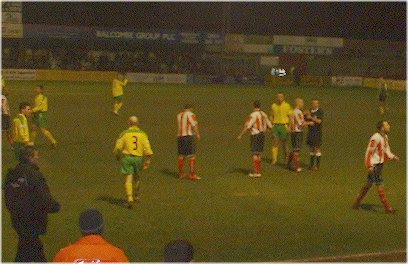
The supporters would form the new club in late April 2006, founding Runcorn Linnets. Since they formed, they’ve spent most of their existence in the North West Counties League before winning promotion to the Northern Premier League West Division One in 2018. These days they average crowds of 627, which is impressive for that level of football. In time the reformed club may become an established NPL club and who knows, maybe even one day a NLN club. A trip there may be interesting as Runcorn is supposed to be quite the shithole with some proper dodgy pubs.
Stalybridge Celtic – 19th
Staying up by 6 points, The Celt’s would go on to be a fixture of the Conference North in its early seasons – ending up as the last surviving team to continuously play in the league (2004-2017).
Following a disappointing first season in the league, they’d go onto to have a number of successful seasons, mainly under Steve Burr. The closest they’d come to promotion was in the 2007-08 season when they finished 3rd in the league, going on to lose the play off final to Barrow 1-0 live on Setanta Sports.

After 5 seasons of top half finishes, the 2012-13 season would see them drop to 13th in the league – as crowds began to drop. 2 more seasons of struggle in 19th spot would follow before they’d have a brief resurgence during the 2015-16 campaign, where they finished 12th under 3-time Conference North winning manager, Liam Watson.
The good times wouldn’t last for long though, and the following season they’d finish in 21st place – being relegated at the exact same time Spartans were promoted back to the league.
Things would get even worse for The Celts as they finished in 22nd place (out of 24 teams), only avoiding relegation thanks to a combination of teams going bust and the pyramid below the NPL being restricted. Again.
After 2 covid shortened seasons and a 14th place finish, they were eventually relegated in 2023 on the final day of the season. So far this season though, they’ve had a half decent one and currently occupy a play-off spot.
Personally, I hope we see them back in the NPL and eventually the NLN sooner rather than later. The ground was canny enough, the locals were okay, and it was an easy enough place to get to. Would rather face them than Banbury United any day of the week.

Moor Green – 18th
So, to keep this part sort of brief, these are now essentially known as Solihull Moors. Sort of.
Originally formed in 1901, Moor Green spent most of their history in the Midland League and eventually the Southern Premier League, before being added to the Conference North. The timing couldn’t be worse though, as their stadium (The Moorlands) would be more or less destroyed after a fire. They’d be forced to play at Damson Park, situated about 15 minutes away which was the home of Solihull Borough.
The former golf driving range was only converted into a stadium in the late 1990’s, and would end up becoming the home of both clubs as Moor Green took refugee in 2005. By though, 2007 Moor Green decided that they would be unable to rebuild the old ground and that they only way for the club to survive would be to merge with a local side. In they end they chose to merge with Solihull Borough, forming Solihull Moors.
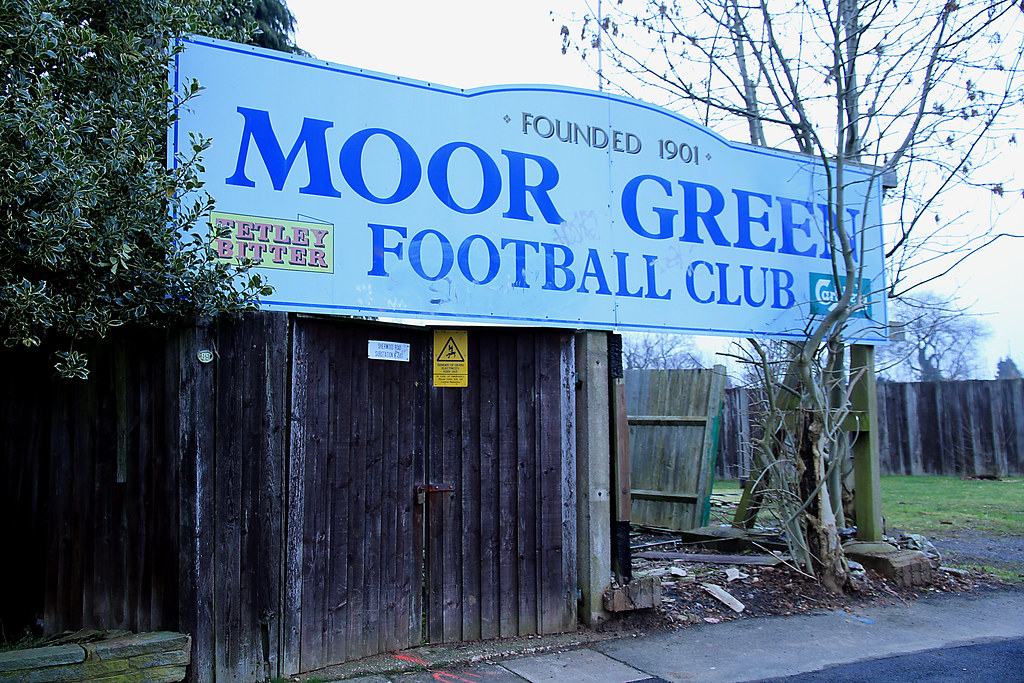
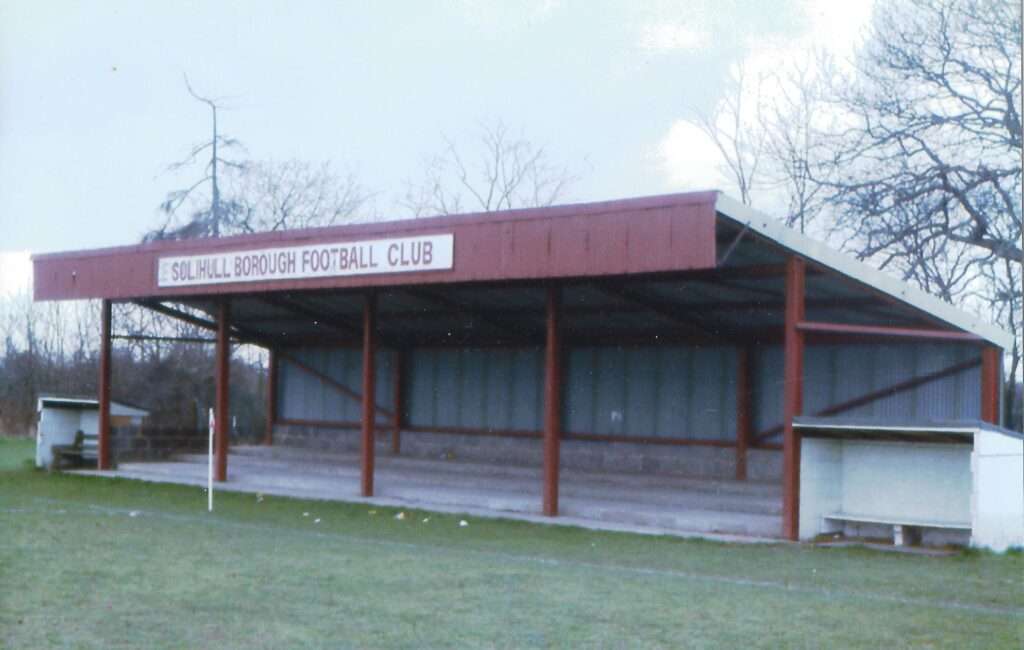
The new club would take Moor Green’s spot in the league system, as well as the manager and players. The club’s new crest was also pretty similar to that of Moor Green’s. From the outside looking in, it seems a like more of a takeover from the Moor Green side of things than a merger.
The new club would go onto have a slow start to life in the Conference North, before influx of money from a variety of sources helped them win the league in 2016. Since then they’ve become an establish, full time outfit in the National League with a decent size fanbase.
Worksop Town – 17th
Had it not been for a points deduction this season, Worksop would have finished up in 8th place, 3 places outside the play offs. By the the time the 2005/06 season came round though Worksop were in free fall both on and off the pitch, eventually being kicked out of their original home ground and being relegated in 2007.
They spent most of their time between 2007 and 2012 fighting for survival at the foot of the UniBond Premier League – while mostly ground sharing with the likes of Hucknall Town, Retford United and Ilkeston Town. They did return to Sandy Lane in 2011, but it would be as tenants of of Worksop Paramore who would later merge with Handsworth FC.
In the 2013/14 season they made it to the NPL play off’s but fell short in the semi’s however, that wouldn’t be the worst bit of news they’d have to overcome. Jason Clark pulled his funding from the club in the summer and they immediately resigned form the league, dropping down to the North East Counties League. They’d stay their until 2019 before finally climbing back out of that league and into the NPL East.
In 2020 they’d be taken over by Peter Whitehead, who had been previously involved with Worksop Paramore and Handsworth FC took over the club and seems to be splashing the cash – having sold his firm Windsor Foodservice after 35 years of running it. Whitehead also bought the ground in 2013 and his improved it from its previously dire state. Mind you, his ‘NO CHEWING GUM’ signs that litter the ground are somewhat odd.
Last season they won promotion form the NPL East while losing just the 1 game all season, and are currently sat in 5th spot in the Northern Premier League. Having had to deal with several of their cunty fans in the FA Cup earlier in the season, I can’t say i’ll be keeping my fingers crossed for them should they make the play offs.
Barrow – 16th
Arguably the most successful of the original Conference North teams. Barrow were your typical struggling part time side at the time, with fairly low crowds. They had been a strong side in the Northern Premier League in the years prior, failing to secure promotion to the Conference every season in the play off’s though – before the task was made slightly harder with the advent of the Conference North.
After 3 years of struggle in the Conference North, they’d win promotion in the 2007/08 season after scraping a 5th place finish to secure the last play off spot after spending the first half of the season just trying to stay clear of the drop zone. They’d defeat Stalybridge 1-0, and during the following the season things for the club things began to really take off for them.
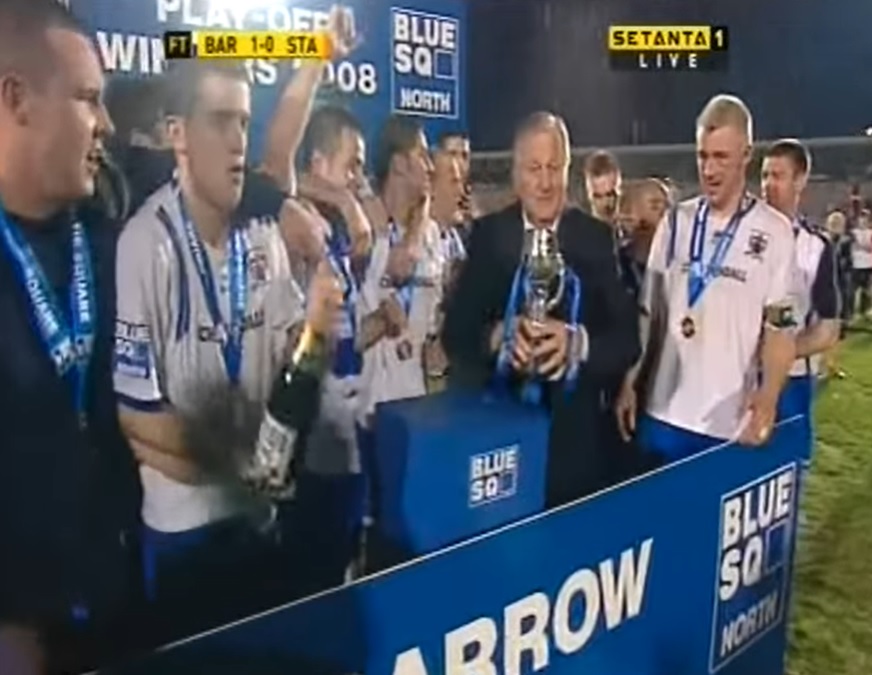
An away trip to Middlesborough in the FA Cup 3rd round where they nearly caused an upset would prove to be a lucrative day for the club. They’d finish the league campaign in 20th place, narrowly surviving the drop. A year later, they’d be in the 3rd round yet again! This time losing away to Sunderland.

Jason Walker was Barrow’s star man at this time, and he led them to a 15th place finish in the 2009/10 campaign, a season in which they also secured the FA Trophy at Wembley – defeating Stevenage. They’d have 2 more seasons in the bottom half of the table before being relegated in the 2012/13 season.
After a season of midtable floundering, Barrow bounced back in the 2014/15 season and won the then Skrill North with Andy Cook leading the charge, scoring 23 goals. He’d net a shed load more the following season, as Barrow finished 11th. They’d challenge for the play off’s in the 2016/17 season but fell short, finishing in 7th spot.
By now the club had spent a small fortune off the pitch, having been powered by money from a Dallas based ‘investor’. The club was also now full time, basing itself down in Manchester, to help them attract a wide variety of players instead of making lads travel all the way up to Barrow on a daily basis. A smart move, as it’s seemingly worked.
A relegation scare in 2017/18 brought them back down to earth though, as did a midtable finish the year before. By now Dallas investor Casson had gone, but Barrow didn’t fall apart. In 2020 when the pandemic hit, Barrow were top of the league and had a favourable PPG record – which ended up winning them the league title and promotion to the Football League!
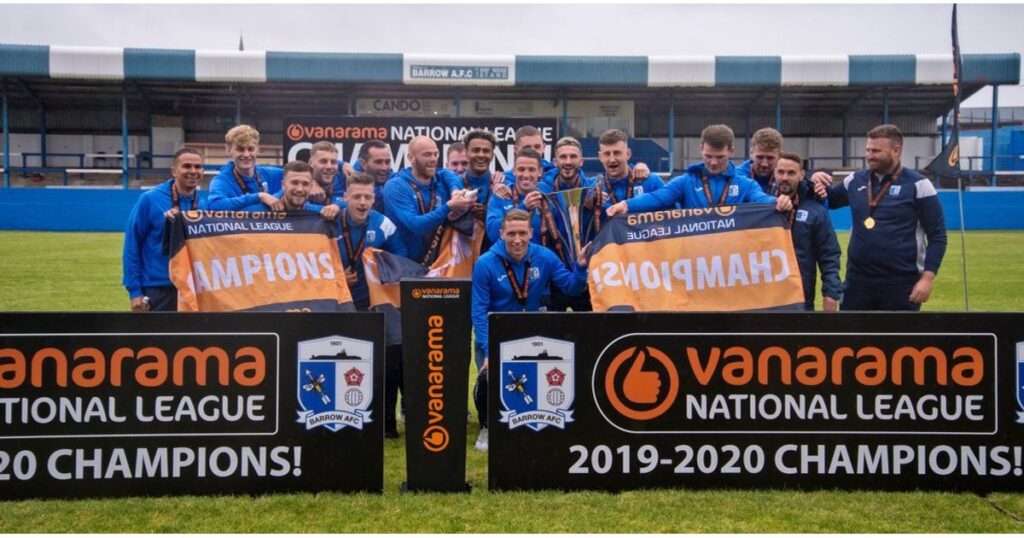
The club has seemingly gone from strength to strength in recent years. After narrowly avoiding the drop in their first 2 seasons in the Football League, they recorded a mid-table finish last season and are currently sat 4th in League Two, challenging for automatic promotion spot.
Vauxhall Motors – 15th
Joys, I get to talk about these fuckers. After spending most of their history in the local Cheshire and North West Counties League, they won promotion to the UniBond first division and eventually scraped promotion to the UniBond Premier League – before being scooped up into the Conference North upon its creation.
A boring and drab midtable finish during the CN’s first season couldn’t sum up Vauxhall better. These lot always failed to attract a crowd, had an awful stadium located in the middle of nowhere – and had quite possibly the WORST name I’ve ever known a football club have. Obviously, they were affiliated with local Vauxhall factory, but the name was just so Sunday league and made whatever league they were in just look amateurish to me.
After avoiding relegation twice thanks to reprieves in the late 2000’s and early 2010’s, they eventually resigned from the league in 2014 due to money worries. They’d still be unable to grow their fanbase, struggling to break the 150 barrier on a weekly basis.
After dropping down to the 10th tier of English football, they win promotion from that level in 2021 to get back to the North West Counties Premier. They won promotion from that last season, and now sitting at the bottom half of the Northern Premier League West.

Alfreton Town – 14th
One of the only OG’s left in the now National League North, Alfreton have probably been one of the more stable teams out of this group of teams over the last 20 years or so, having been led by longtime owner Wayne Bradley.
After a few midtable finishes in the league’s early days, Alfreton finished 3rd in both the 2008/09 and 2009/10 seasons. They were mainly powered by the goals of Liam Hearn and Paul Clayton, before finally winning promotion as league champions in 2011 under manager Nicky Law.
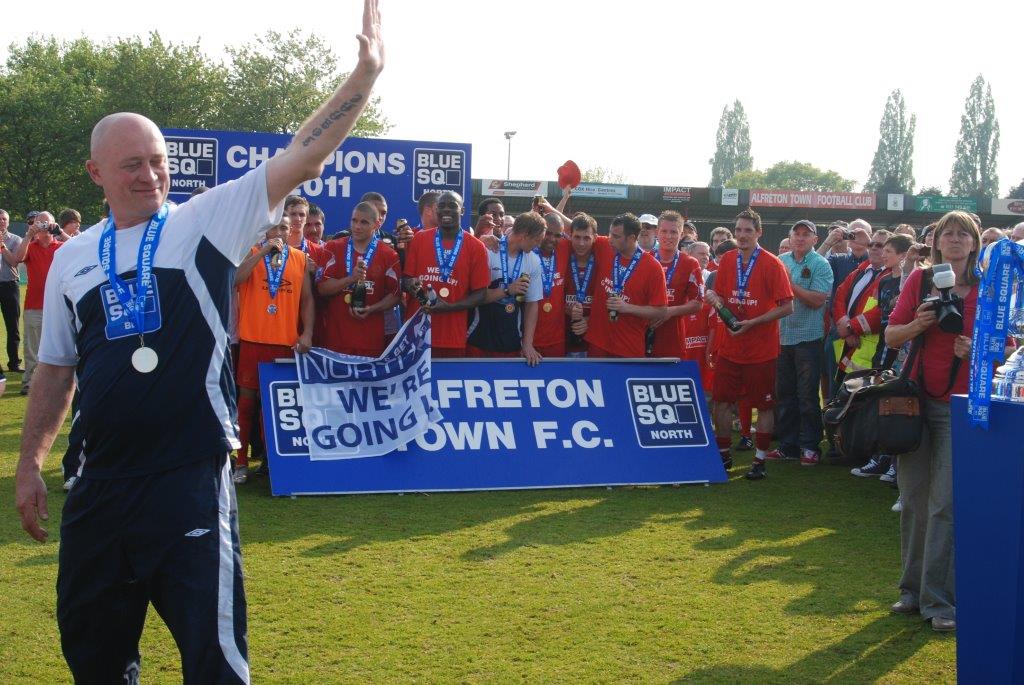
During that era they also managed a decent cup run, getting to the 2nd round in 2008/09 where they were thrashed 4-0 by then League One side Scunthorpe United who would win promotion to the Championship that season, beating Millwall 3-2 at Wembley. How times change.
They’d spend 3 years in the then Blue Square Premier but were relegated in 2015, finishing in 21st place. By now the leagues were a lot more settled, so no reprieve came to save them.
After 2 disappointing seasons back in the now National League North, Nicky Law left the club after 10 seasons. Their average crowds has also dropped down to pre–Blue Square Premier levels, regularly only getting around 450 at home but their average attendance would be prompt up by the bigger away followings.
A few more uneventful seasons would follow with John McDermott, Chris Moyses and eventually Billy Heath at the helm, who has still at helm now in his 6th season at the club. During the behind closed doors covid season they’d massively regress, finishing in 21st place when the season was curtailed. Only Michael Nelson’s Blyth team would keep them from last place.
Since the restart though Alfreton have been on the up on the pitch. A 9th place finish was followed by a 5th place finish last season, though they’d lose in the play of quarters to eventual winners Kidderminster Harriers.
At present it looks like Alfreton will once again be challenging for a play off spot, with Billy Heath’s route one Brexitball side sit in 9th spot just a single point outside the play offs, though they do have 3 games in hand.
Lancaster City – 13th
The second most northerly team in the league during this era, Lancaster’s spell in the Conference North wasn’t a long one. During the 05/06 season, Lancaster would drop to 15th before imploding during the 2006/07 campaign. They’d win only 2 games all season and enter administration early on, earning themselves a 10-point deduction and finishing the season on just one point. On a side note though, the Blyth lads got to enjoy a belta of a day out at Lancaster on the final day of that season!

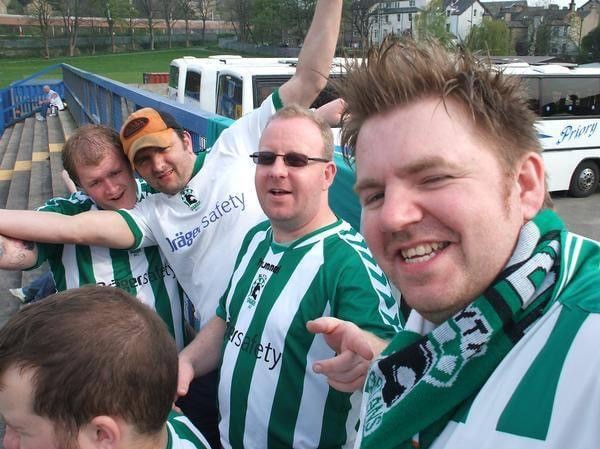
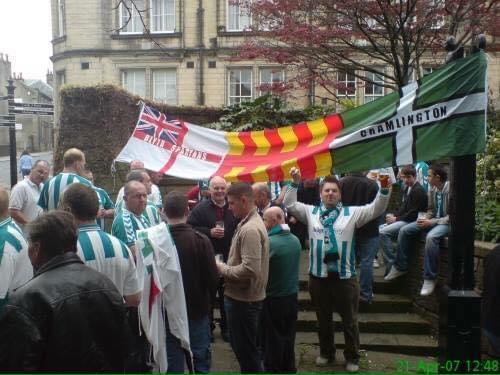
According to the clubs Wikipedia page they ‘folded’ at the end of that season. Though they would keep the same name, crest and colours while to this day claim to to be formed in 1913, which is all a bit odd. They start the 2007/08 season in the NPL 1st Division North though, finishing 11th out of 18 teams after the NPL 1st Division grew in size and split into North/South leagues in what was yet another restructure.
Over the next 10 years or so, the club would constantly fight for promotion from that level before finally achieving it as Champions in 2017.
Since winning promotion to the Northern Premier League, Lancaster have been a comfortable midtable team – bar the 2 abandoned COVID campaigns of course. This season they are currently once again, sat in mid table.
Hinckley United – 12th
The third team on this list that sort of don’t exist anymore, Hinckley United was formed in 1997 after Hinckley Town and Hinckley Athletic merged together. They’d start life out at Town’s ground, which was somewhat dated at that point.

After working their way up through the Southern Premier League system they’d get a spot in the inaugural Conference North season and earned a safe midtable finish. Later in the 2004/05 season though they’d move into the rather impressive Leicester Road stadium, which was considered one of the best stadiums around in the league at the time and in fairness it’s probably better than most grounds in the league today.
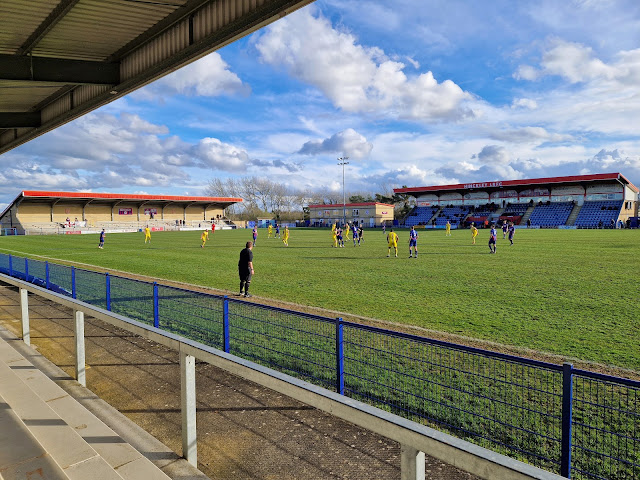
The 2006/07 season saw them finish in the play off’s, despite being beaten of Spartans on the final day of the season. They’d lose in the play off final to Farsley Celtic who had pipped Spartans to the final play off spot.
Earlier in that same season though, tragedy had struck at as defender Matt Gadsby collapsed and died on the pitch at Harrogate Town in September 2006, suffering a cardiac arrest. Hinckley players took a month away from football and spent the rest of the season playing catch up.
The following season though would see Hinckley drop off massively, finishing in 19th just above what would have been the relegation zone, mainly thanks to beating fellow strugglers Blyth Spartans late in the season. The Knitters flirted with the play offs for 2 seasons before HMRC came calling, as Hinckley hadn’t bothered to pay much tax in recent years having spent the money on wages (apparently).
More seasons of struggle would follow and a reprieve would save them from the drop in 2012 – but the writing was already on the wall. Longtime manager Dean Thomas resigned early in the 2012/13 season as the financial issues at the club crippled the team, and they’d be relegated in 2013 before liquidating in October 2013, 6 years after the money issues really began.

Since the club folded, 2 teams have sprouted from the the ashes of United. Hinckley AFC and Hinkley Leicester Road FC both claim to be the successor club to United, with Leicester Road eventually getting the old stadium. Both teams absolutely despise each other but if I was to get into now, we’d be here all day.
From an outsiders perspective though, the divide does seem rather odd both teams struggle to attract big crowds and had this weird split in the fanbase been avoided back in 2013, we might even have a Hinckley based team back in the National League North.

